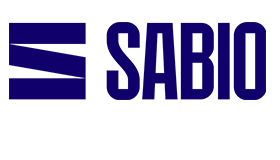Jim Fleming at Sabio explores key indicators to determine if you’re driving the benefits of your workforce management solution.
Implementing a workforce management (WFM) solution can transform your organisation’s efficiency, productivity, and cost management.
However, to truly benefit from the system, it’s essential to assess whether the solution is delivering on its promises.
Improved Employee Scheduling
A core component of any WFM system is the ability to optimise scheduling. If your solution is working effectively, you should see clear improvements in how shifts are managed.
Look for reductions in understaffing and overstaffing, fewer scheduling conflicts, and increased employee satisfaction with their schedules.
The system should also be handling complex scheduling tasks (like multiple shift patterns, seasonal changes, and staff preferences) with ease.
If your team is spending less time on manual scheduling, and the right employees are in the right place at the right time, this is a sign that you’re leveraging your WFM solution effectively.
Reduced Staffing Costs
One of the primary goals of a WFM solution is to deliver an optimal schedule, at the least cost. With an optimal schedule to meet demand across all channels, you should see a decrease in overtime costs at times you are understaffed, as well as less periods of overstaffing.
By analysing data on employee hours, shift patterns, and demand fluctuations, the system should help you align workforce needs with business demands.
If your staffing costs are more predictable and manageable, this indicates that you’re using your WFM tool to optimise workforce allocation and minimise unnecessary operational costs.
Better Compliance With Local Laws
Ensuring compliance with staffing regulations is critical to avoid fines and legal issues. A good WFM solution will automate compliance, ensuring that employees don’t exceed allowed work hours, meet required break times, and comply with wage regulations.
This has become a significant focus with recent changes to laws in European countries – more recently in Spain with the Customer Service Law coming into effect in 2024, and the new UK government ‘delivering a new deal for working people,’ with reforms planned under the Employee Rights Bill.
If you notice a reduction in compliance issues and fewer penalties related to law violations, it’s a clear sign that your WFM system is helping you stay within legal requirements.
Enhanced Employee Performance and Engagement
An effective WFM system doesn’t just benefit the company but also improves the employee experience. Employees should have access to self-service options like viewing schedules, requesting time off, or swapping shifts easily. This autonomy can lead to higher job satisfaction and reduced turnover.
Monitoring key performance indicators (KPIs) such as absenteeism rates, engagement scores, and employee turnover can help you gauge if your WFM solution is contributing to a more motivated and efficient workforce.
Real-Time Data and Insights
One of the greatest advantages of a modern WFM solution is the access to real-time data. You should be able to monitor workforce performance, track productivity levels, and make informed decisions. This real-time insight allows you to be proactive rather than reactive in addressing workforce issues.
If you are leveraging this data to anticipate staffing needs, improve workforce allocation, and enhance customer service levels, you’re on the right track.
Scalability and Flexibility
As your organisation grows, your WFM solution should grow with you. If your current system is easily adaptable to changing business needs, such as handling more employees, multiple locations, or evolving compliance requirements, it’s a sign that you’re using a scalable solution.
A rigid system that can’t keep up with your business changes will not fully deliver its benefits. Ensure that the system you’ve implemented can flex as your company evolves.
Streamlined Operations
Last, but certainly not least, a strong indication of a well-implemented WFM solution is the overall simplification of operations.
When integrated with other systems like payroll, HR, CRM, your workforce management software should make operations more seamless. Less time should be spent on manual tasks, and more on strategic workforce planning.
To ensure that you’re driving the benefits of WFM, regularly assess the system’s impact on scheduling, staffing costs, compliance, employee engagement, and operational efficiency.
If your WFM solution is delivering real-time insights, reducing manual effort, and supporting your business growth, then you’re likely realising its potential.
This blog post has been re-published by kind permission of Sabio – View the Original Article
For more information about Sabio - visit the Sabio Website
Call Centre Helper is not responsible for the content of these guest blog posts. The opinions expressed in this article are those of the author, and do not necessarily reflect those of Call Centre Helper.
Author: Sabio
Reviewed by: Rachael Trickey
Published On: 17th Sep 2024 - Last modified: 22nd Oct 2024
Read more about - Guest Blogs, Sabio






 Sabio Group is a global digital customer experience (CX) transformation specialist with major operations in the UK (England and Scotland), Spain, France, Netherlands, Malaysia, Singapore, South Africa and India. Through its own technology, and that of world-class technology leaders such as Amazon Connect, Avaya, Genesys, Google Cloud, Salesforce, Twilio and Verint, Sabio helps organisations optimise their customer journeys by making better decisions across their multiple contact channels.
Sabio Group is a global digital customer experience (CX) transformation specialist with major operations in the UK (England and Scotland), Spain, France, Netherlands, Malaysia, Singapore, South Africa and India. Through its own technology, and that of world-class technology leaders such as Amazon Connect, Avaya, Genesys, Google Cloud, Salesforce, Twilio and Verint, Sabio helps organisations optimise their customer journeys by making better decisions across their multiple contact channels. 





























